How To Do Dual Boot In Windows 10
You volition learn everything yous need to know virtually dual-booting Linux and Windows.
I assume you already take Windows installed on your computer and you simply demand to install Linux to dual boot. This post will guide you through the following key points of the dual boot installation:
- Essential BIOS settings for successful dual boot.
- How to shrink your Windows partition to become free space for Linux.
- How to install Linux, using Linux Mint as an example.
- How to set the kick order in your computer to see the menu where yous can choose between Linux and Windows to boot.
- Finally, I will explicate why I am not a fan of dual-booting and why I recommend using Windows in a virtual machine as I showed in this post.
*NOTE: Before you employ whatsoever actions from in this mail, please dorsum up all your important data.*
BIOS settings
Unfortunately, most of the computers have BIOS configured specifically for Windows, and likely you won't be able to install Linux on it without irresolute some settings. BIOS interface may differ from one computer to another but the master settings are the same.
I will use the BIOS of my Acer Swift one laptop as an example hither.
Get into BIOS
Offset, you need to get into BIOS, usually, you just need to press a specific cardinal during the boot. In my Acer Swift 1, I press F2. Merely google your computer model and bios primal term, and you volition discover the fundamental y'all demand to press. Sometimes, you may likewise see it on the screen during the boot:
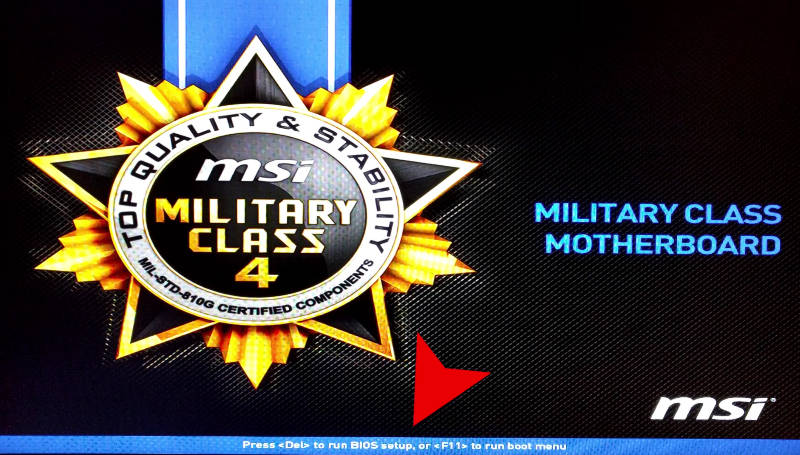
Ready the BIOS password
Side by side, yous may demand to set a password in your BIOS because it won't permit y'all to change whatever security settings without a password. This is the menu to set the countersign on my Acer Swift 1:
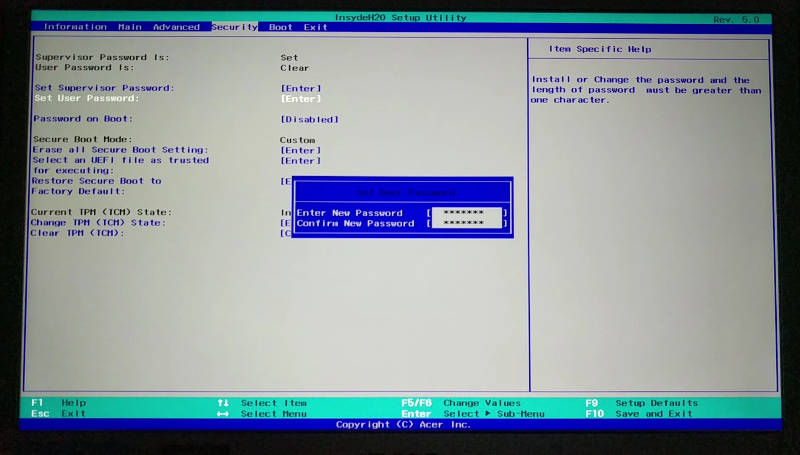
Yous should exist able to find the aforementioned in your BIOS. It is also possible that y'all can go along without setting a password.
Disable Secure booting and change the Boot order
Next, you need to go to the Kicking menu and disable Secure booting and move your bootable USB flash drive to the first identify in the boot order:

Bank check this description of the commands on the right or bottom of your BIOS interface, it explains how to navigate and alter options in your BIOS.
I am not going to finish hither on how to create a bootable USB drive. I accept already explained how to create a bootable USB from the command line or using graphical programs.
Save BIOS settings
In the end, go to the go out carte du jour and exit BIOS with saving the changes:
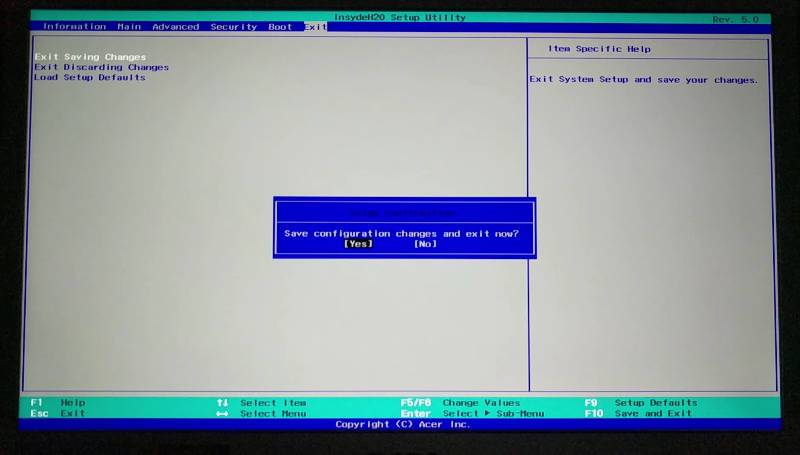
If you take done everything correctly, you should boot in your Live USB Linux system:
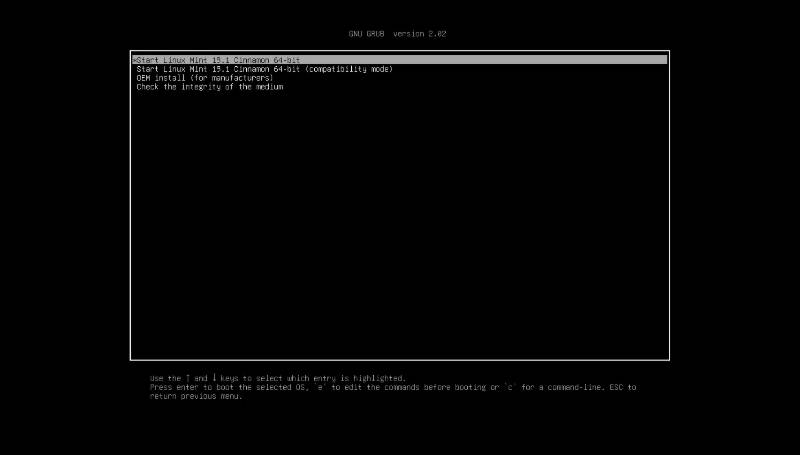
Become costless infinite for Linux
Boot into Alive Linux session
Boot from the Alive Linux USB. I volition utilize Linux Mint installer as an example here, if yous employ Ubuntu or whatsoever Ubuntu-based distro, the procedure volition non differ at all. If your distro is non Ubuntu-based, you still need to do the same steps as you volition run into in this post but the installer may look slightly different.
To install Linux alongside Windows, you tin actually select such an option in the installation wizard:
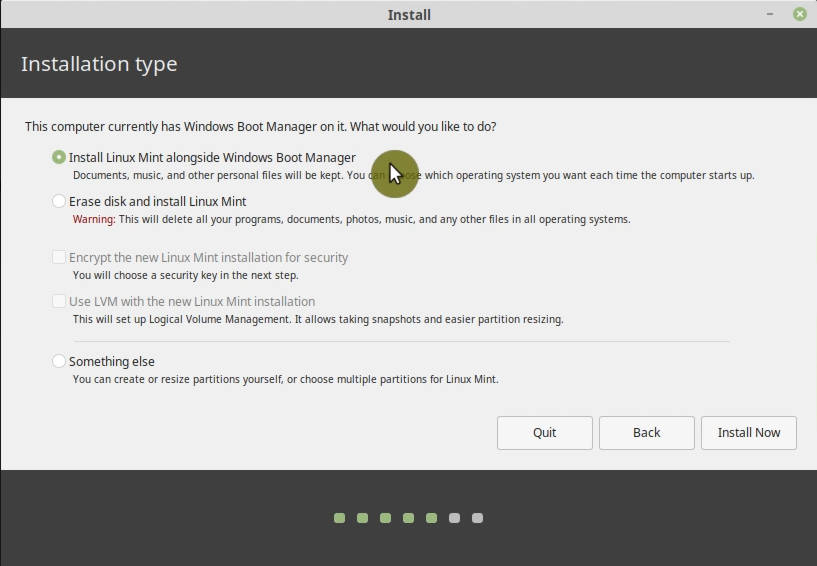
It will automatically find complimentary space on your hard drive and install Linux there. Nonetheless, if yous want to have fiddling more control over how much space you allocate to Windows and Linux, you lot can get free space and assign it for Linux manually.
Shrink the Windows partition with GParted
Almost of the Linux distros take GParted included in a Live ISO. If it is not, install it from the Software Centre. So open GParted and select the difficult drive with your Windows installed:
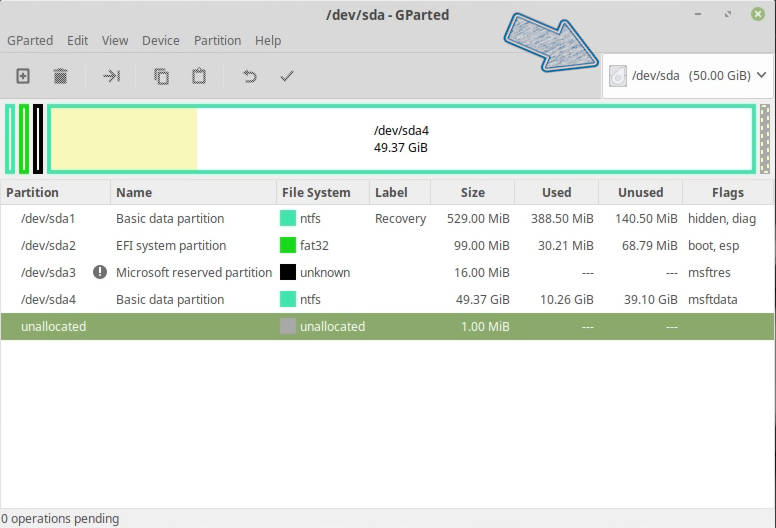
Your Windows difficult drive will be partitioned similarly to the one y'all come across above. Most probable it will have the EFI division, and this ways y'all demand to install Linux in the EFI mode too.
To shrink the Windows segmentation to become free space for Linux, you need to select the largest partition, click on the Partition carte du jour in GParted, and select resize.
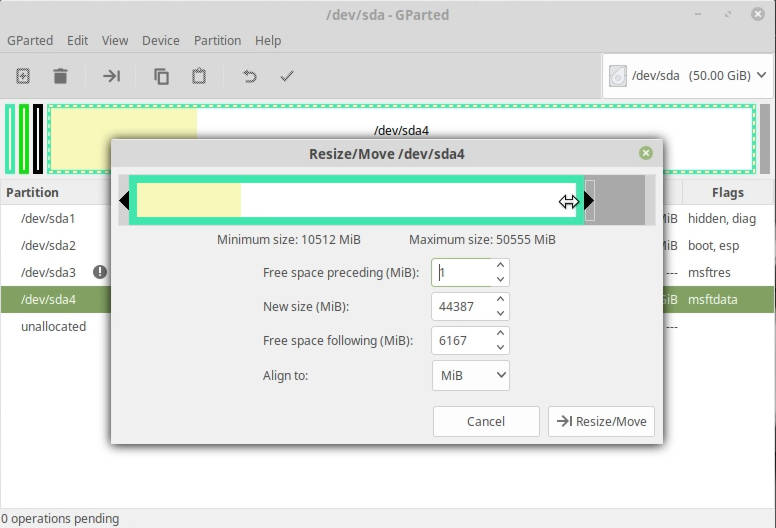
All white space is free space. So, you tin can shrink this partitioning with your mouse, or by selecting its size precisely with the number. You can take a maximum of free space for Linux if you aim to use mainly Linux, simply leave some complimentary space for Windows also, because it may non exist able to work without complimentary space left.
Click resize. Read this warning to know the gamble and click OK. Yous will see how your partitions will look similar later you utilise the resizing:

So far, no changes to your hard bulldoze have been applied. It is only a plan of action. You yet tin can cancel everything, if you take done a mistake somewhere. Withal, if you are happy with this division tabular array. Click apply. This action will exist irreversible.
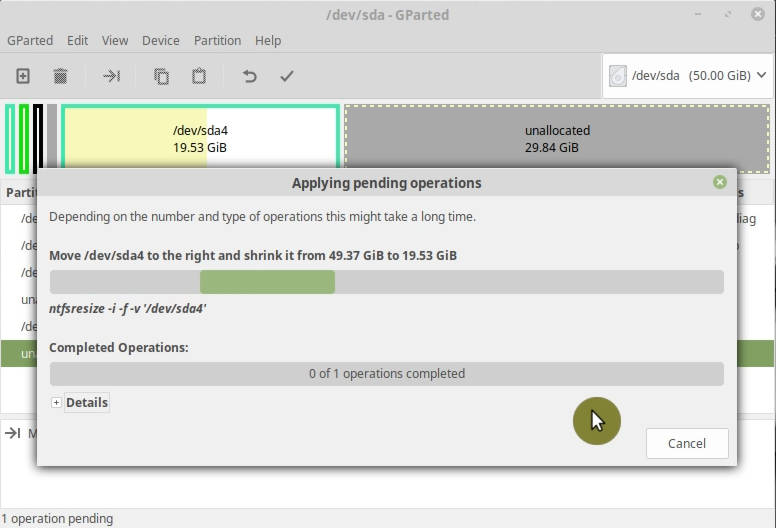
Resizing will take some time. Hopefully, information technology will finish successfully and you can proceed with the installation.
Install Linux
To install Linux, click on the Install icons on your desktop or in your menu. The installation process is pretty standard.
I recommend to include the tertiary party software in the installation:
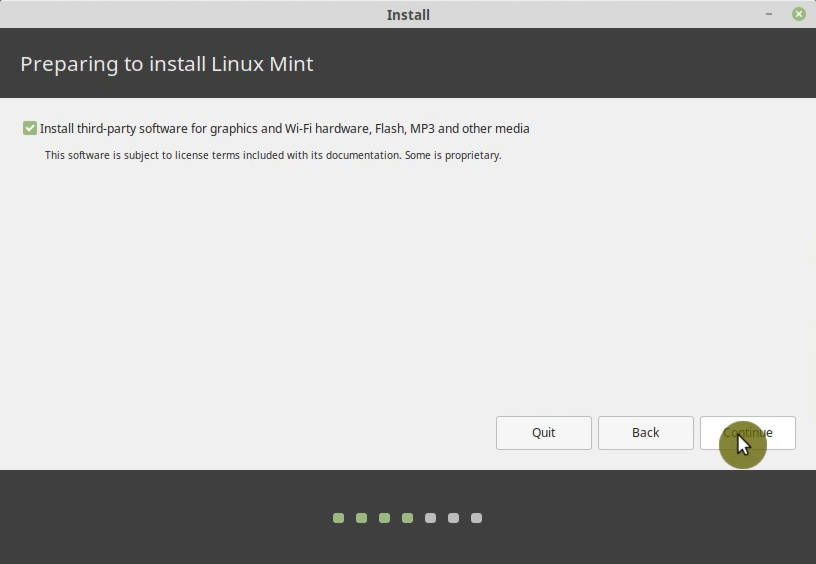
Select Transmission partitioning
As I mentioned before, you lot tin select the option to Install Linux alongside Windows automatically, but I personally adopt the manual way. That's why we shrank the Windows partition and released some free infinite for Linux. Manual way not only gives more command merely it besides helps to empathize what happens to your system when you install two systems aslope each other. So, select Something else here:

Create Linux Partitioning
The new screen will evidence you the partitions of your hard drive. You need to select the free space we accept created in the previous step. Then click on the add sign, to create a Linux partition in this free infinite:

You tin can keep all the options at default here but importantly you need to assign / as a mounting point to this partition.
You lot tin can also split this gratuitous space into two parts and assign one to the system / and ane to /swap. But I believe information technology is much better to use a swap file instead. Ubuntu installer creates a swap file by default. I already explained the difference between a swap file and swap partitioning previously.
Check the EFI division
Next, yous need to select the EFI division, it is usually of several hundred megabytes in size. Brand sure it is detected equally EFI:
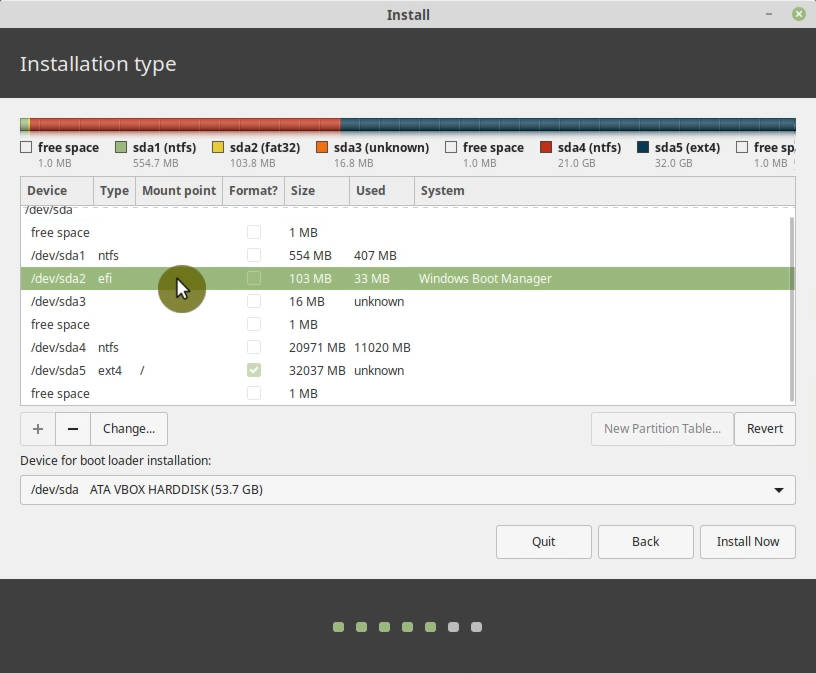
Kick loader installation
Boot loader installation doesn't matter hither because it volition be UEFI installation, so the boot loader will exist installed in the EFI sectionalisation. You tin can keep the default pick.
Format column
Finally, check that merely the new Linux segmentation will be formatted in the Format column. Because if you accept other partitions selected for formatting, be careful you will lose all the data stored in those partitions. If everything is fine, click Install.
Finalize the installation
While the organization is installing, select your location, provide your user data, set the password, etc.:
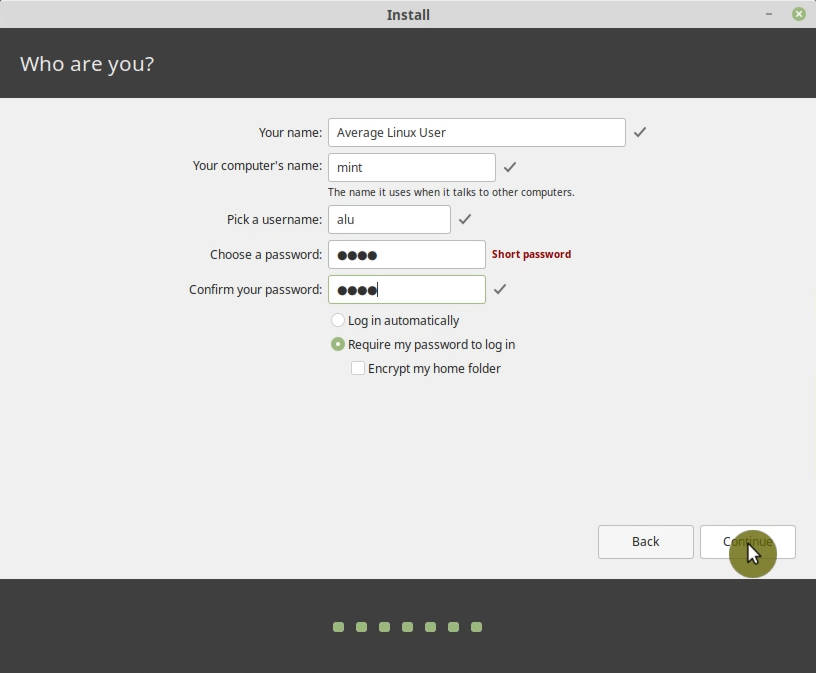
And then just wait until the system is installed.
After the installation, reboot the organization and do not forget to remove your installation USB when you lot are requested to do then:
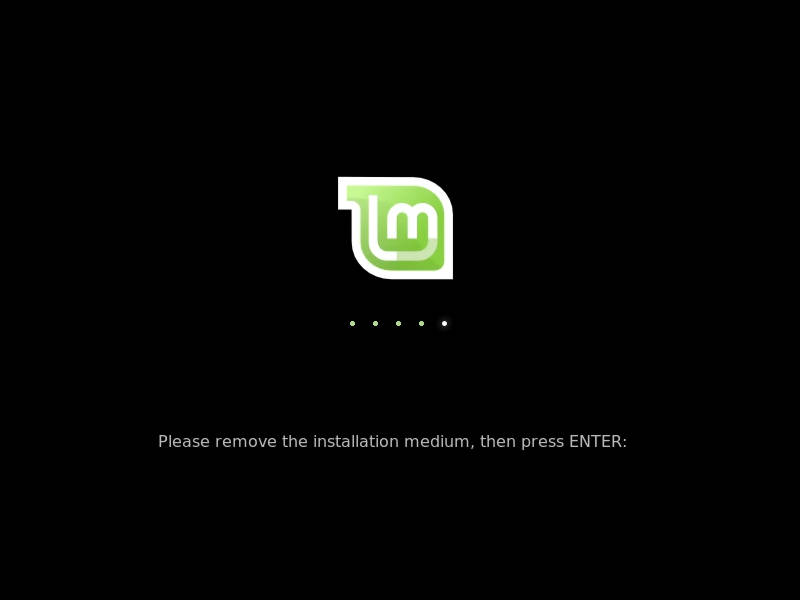
Boot into the new organization
You should encounter this Chow menu subsequently the reboot. Here you can select between Linux, which will kicking past default in 10 sec, and Windows:
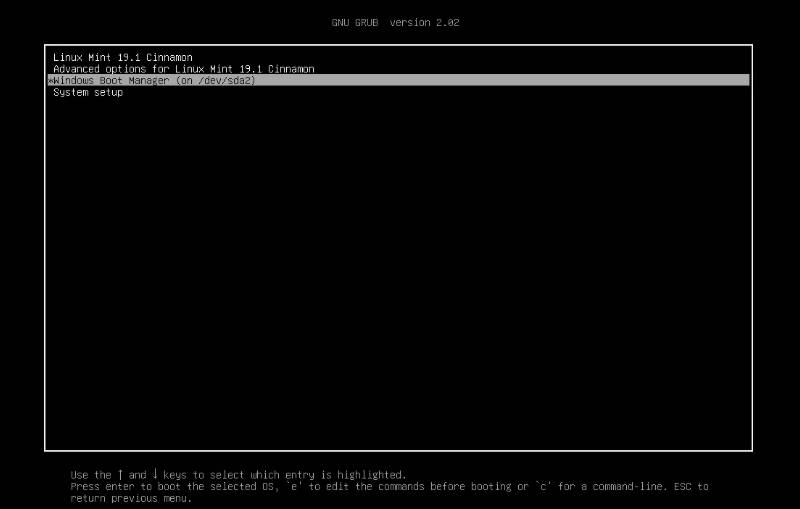
Boot options in BIOS
If it happened that afterwards the reboot, you booted directly in your Windows and you did not encounter any Linux menu, do non get upset. Likely, yous have done everything right and yous simply need to modify the boot social club in your BIOS. Like I had to practise in my Acer Swift 1.
In the Main tab, find the Boot menu and enable information technology:

Modify the Boot order
So go to the Boot club and you should see an additional boot option there that appeared after you installed Linux. In my case, it is still chosen Windows Kicking Managing director without the lawmaking in brackets. This is really my Linux boot file. I do not know why BIOS branded it every bit Windows. Then, I make it a first boot choice:

And relieve the BIOS changes. After the reboot, you should see the GRUB menu with the choice of kick options.
If you still kicking into Windows by default, try to open the boot bill of fare during the outset of your system by pressing the F12 key (or any key is assigned to your BIOS Kick bill of fare). It should bring this BIOS kicking menu:
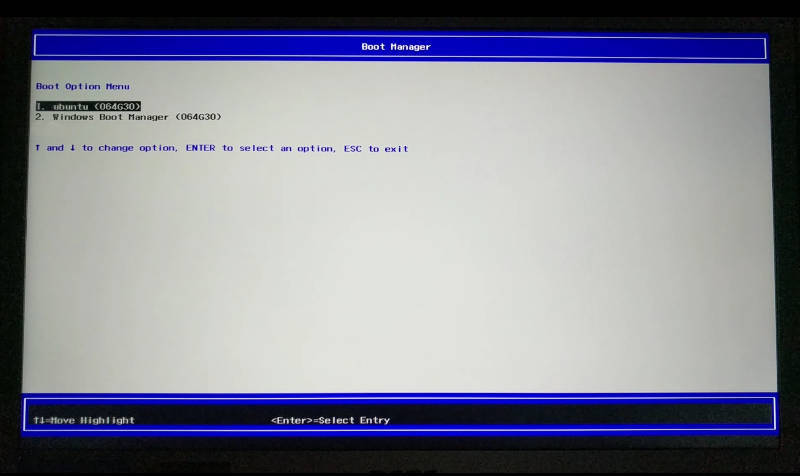
Where I tin can choose Ubuntu and my Linux Mint will boot. So, the BIOS Boot carte du jour helps to make sure that Linux works, you lot but need to check your boot order settings, mayhap Linux is not the beginning option there. Try different orders until you get Linux booting the get-go.
Why I do not recommend dual-booting
There are 3 principal reasons I stopped dual-booting and this is also why I exercise not recommend dual kick.
-
If you use Windows in dual kick, it is possible that some updates of Windows may break your Linux installation. Theoretically, information technology should not happen, but information technology happens. Perhaps Windows changes the Linux bootloader in the UEFI partition. I exercise not know.
-
If you dual kicking, y'all will never switch to Linux. If you are used to Windows, y'all will tend to boot into Windows more frequently and yous won't like to reboot to get to Linux. And then, you volition not utilise Linux much and thus will never switch to Linux completely.
-
On the other manus, if you adopt Linux, Windows will just accept besides much space on your hard drive that is never used. And so, this is not good either.
I recommend using Windows in a Virtual machine such as VirtualBox. This fashion your Windows can be accessed from inside Linux. Windows will exist less powerful than if it was installed in dual boot, but you still can practise most of the things you would normally do. A virtual machine too isolates your Windows file organisation and this provides better protection confronting viruses. Y'all tin read my postal service on how to install Windows 10 in VirtualBox and perhaps yous volition similar that option more dual-booting.
Source: https://averagelinuxuser.com/dualboot-linux-windows/
Posted by: taylorshantoote1978.blogspot.com

0 Response to "How To Do Dual Boot In Windows 10"
Post a Comment